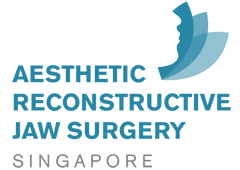Share this
Saving failing dental implants
on September 21, 2015

As dental implants becom ubiquitous, complication rates are bound to rise. Over the last ten years, dental implants as a tooth replacement option has gain widespread acceptance in Singapore. This demand has also spurred the growth of continuing education courses for dentists to acquire the necessary skills to provide this service to patients. Dentists getting into this area are jumping into the deep end from day one. Implant Dentistry has evolved significantly since the 80's. Our understanding of the biological process of osseointegration has improved, allowing for a wide variety of reconstructive surgery to restore the jaw bone for placement of implants. Extensive research in biomechanics has also led to innovative prosthetic designs. More manufacturers of dental implants have also emerge to capitalize on this growing market. As the variety of implant systems and treatment plan widen, the potential for complications increases. Along with that, our ability to manage these complications must grow in tandem.
The Patient Factor
First, the patient must understand that dental implant treatment like any other treatment modality in Medicine and Dentistry, is not an exact Science. While it is scientifically validated, the delivery of the treatment is an artform. As such, there can be no guarantee of success. Just as you would not expect a kidney transplant surgeon to guarantee that the transplanted kidney will work for a specified period of time, it is unrealistic to expect your dentist to guarantee the success of the implant. A car or a washing machine can have a warranty period because it is a mechanical device whose effectiveness is a function of the manufacturing process. Although the dental implant looks like a screw, its similarity to a screw in your car ends there. A screw in your car serves a purely mechanical function and its stability is purely determined by the amount of torque you use to screw it in. For the dental implant, the insertion torque is only responsible for the initial stability. The long term stability of the implant depends on the physiology of bone healing and bonding with the implant surface. Some times, even when there is good stability at the point of inserting the implant, the implant can become loose after a while. In fact, the implant is always less stable one month after the insertion than on the day of insertion due to the resorptive response of the bone to the implant. Thereafter, new bone are deposited and the stability increases again.
The Dentist Factor
The experience of the dentist plays a big role in the success of implants. This is normal and is the case with all skills. However, even the most experienced implant dentists have failures. Nobody can have a 100% control over bone healing. It is not uncommon for dentists attending training courses to ask how to manage a failing implant. The simple answer is to remove the implant and let the bone heal. While implant failures are not necessarily caused by infection, the instability of the implant can give rise to infection and worsen the healing process. It is not an easy decision to make because one needs to be able to differentiate an incompletely healed implant from a failed implant.
The Cost Factor
Let's face it. Implant dentistry is expensive. And salvaging failing implants can be even more expensive. Whenever I lecture on managing complications, I like to use the movie Saving Private Ryan as an analogy. In order to save Private Ryan, many more must die. In managing dental implant complications, we must bear in mind that trying to save a failing implant may actually make it worse. In many cases, removing it and starting anew is a better option. Sometimes, we may even have to fall back onto traditional crown and bridge or dentures.
The Catch-22 situation
There are situations where removing a failing implant can create signficant morbidity and in these situations, some of the salvaging methods may be justified. For example, if an implant replacing a front tooth is integrated at the deep part of the bone but infection keeps occuring at the gum level and exposing the screw threads. This poses not just a functional problem but an aesthetic one as well. If the implant is integrated, removing it will require the removal of a lot of bone. This will compromise the chances of having a good outcome when re-doing the implant. On the other hand, leaving it alone is also not a good option as the infection can recur repeatedly. Under such circumstances, salvage treatment may be attempted. This may involve first removing the crown from the implant to facilitate proper oral hygiene management around the implant. This may involve professional cleaning of any exposed part of the implant and meticulous home care. Once the gingival health is restored, surgery may be done to augment the bone and/or soft tissue around the implant. If a rough surface implant is used, smoothening the exposed rough surface will also help with the maintenance of the implant. These salvaging methods cannot give ideal aesthetic outcomes but may be able to maintain the functionality of the implant for a longer time.
There are many techniques that have been published, advocating certain treatment modalities to treat failing implants. The results are equivocal at best and are extremely technique sensitive. In a surgical site where the healing ability of the tissue is already compromised, additional procedures take a greater toll on the tissues.
Prevention if better than cure
It is best to identify the potential problems before the treatment begins than to try to solve the problems when they arise. In my practice, I adopt a "belt and suspenders" approach, where I overengineer and build in some degree of redundancy in my treatment plan. The downside to this is that the cost goes up and being a private practice, it makes for an uncompetitive pricing. Some patients will compare fees and question the need for such additional precautionary steps. Every once in a while, I will have a moment of weakness and give in to a patient's request for a "simpler" plan and this is when Murphy's Law will strike, for these are the cases where complications will happen. Somehow, when you carry an umbrella, it seldom rains, but that one day you decide to leave your umbrella at home, it rains cats and dogs.
Patients should choose the dentist that they trust and then trust the dentist to offer the best option for them. Professionally, dentists need to offer various treatment options to patients as there are always more than one evidence-based option available. However, we usually have not doubts which option we will choose if we or our loved ones needed treatment. This is one question patients should ask their dentists or doctors when given various options to choose from.
Share this
- Jaw Surgery (93)
- Dental Implants Singapore (90)
- Orthognathic Surgery (48)
- Replacing Missing Teeth (26)
- Missing Teeth Options (23)
- Underbite (23)
- Bone Grafting (21)
- Costs (18)
- Facial Aesthetics (18)
- Aesthetics (17)
- dental implants (16)
- corrective jaw surgery (15)
- BOTOX (11)
- Dermal Fillers (11)
- Wisdom teeth (10)
- Fixed Implant Dentures (8)
- Loose Dentures Singapore (6)
- Medisave (6)
- sleep apnea (6)
- Braces (5)
- Dental Pain (5)
- Dentures in Singapore (5)
- Loose Teeth (5)
- Tooth Extraction (5)
- jaw deformities (5)
- bimax (4)
- bone graft (4)
- maxillomandibular advancement (4)
- all-on-4 (3)
- bimaxillary protrusion (3)
- chin implant (3)
- facial asymmetry (3)
- full mouth dental implants (3)
- genioplasty (3)
- immediate implant (3)
- removal of an integrated dental implant (3)
- third molars (3)
- wisdom tooth surgery (3)
- My Dentures Don't Fit (2)
- VME (2)
- bone graft healing (2)
- distraction osteogenesis (2)
- medical tourism (2)
- obstructive sleep apnea (2)
- orthodontics (2)
- plastic surgery (2)
- CT guided dental implants (1)
- Double jaw surgery (1)
- Invisalign (1)
- Periodontal Disease (1)
- Permanent Dentures Singapore (1)
- before and after photos (1)
- facial trauma (1)
- fractured dental implant (1)
- oral appliance therapy (1)
- root canal treatment (1)
- veneers (1)
- vertical maxillary excess (1)
- September 2019 (2)
- July 2019 (2)
- May 2019 (2)
- August 2018 (1)
- October 2017 (1)
- September 2017 (2)
- August 2017 (1)
- June 2017 (2)
- May 2017 (4)
- April 2017 (1)
- March 2017 (1)
- February 2017 (3)
- January 2017 (3)
- December 2016 (1)
- November 2016 (2)
- October 2016 (4)
- September 2016 (9)
- August 2016 (5)
- July 2016 (11)
- June 2016 (14)
- May 2016 (6)
- April 2016 (2)
- March 2016 (1)
- January 2016 (7)
- December 2015 (10)
- November 2015 (4)
- October 2015 (9)
- September 2015 (7)
- August 2015 (1)
- July 2015 (6)
- June 2015 (3)
- May 2015 (7)
- April 2015 (5)
- March 2015 (8)
- January 2015 (5)
- December 2014 (7)
- November 2014 (7)
- October 2014 (6)
- September 2014 (8)
- August 2014 (5)
- July 2014 (7)
- June 2014 (8)
- May 2014 (9)
- April 2014 (10)
- March 2014 (6)
- February 2014 (8)
- January 2014 (3)
Subscribe by email
Email subscription




No Comments Yet
Let us know what you think